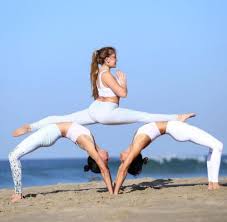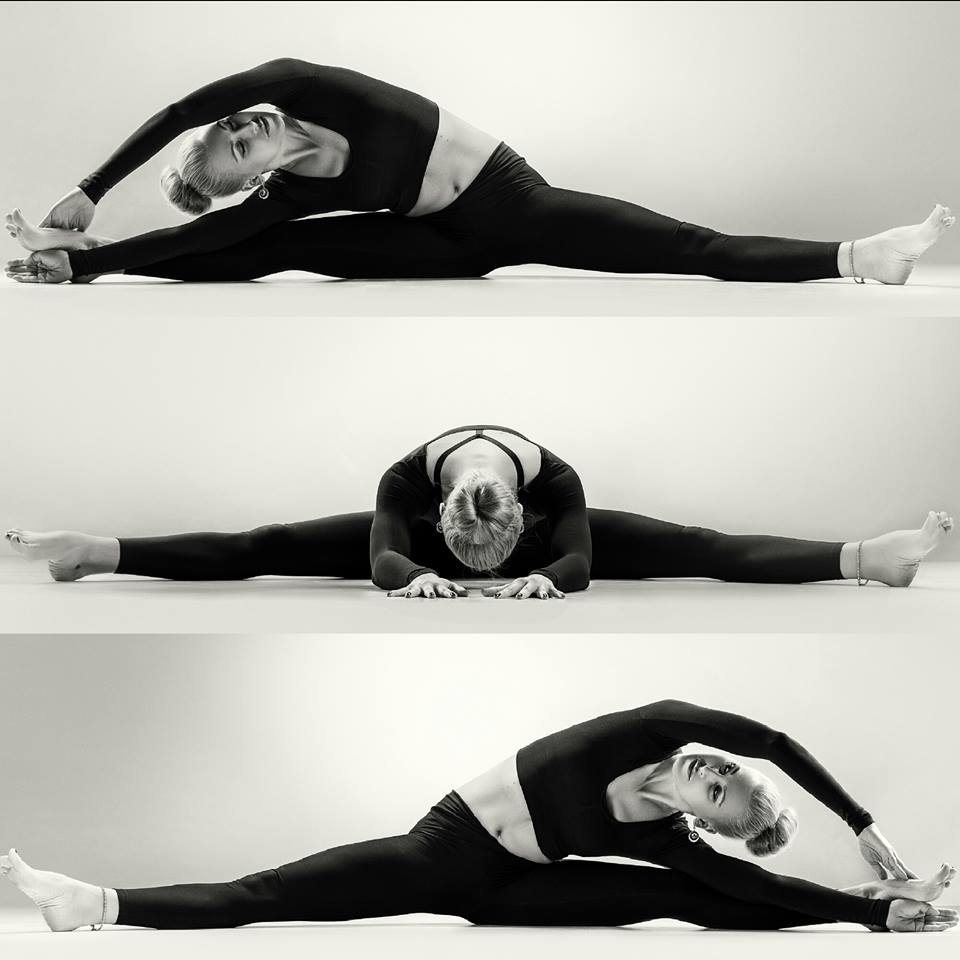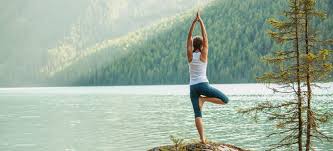Yoga blocks and their superpowers
 The bricks are used to “raise the floor”, bring it closer to the student and thereby facilitate the presence in the asana.
The bricks are used to “raise the floor”, bring it closer to the student and thereby facilitate the presence in the asana.
And now more specifically: what gives the use of yoga blocks?
1. The correctness of the detuning
Often, when we really want to touch the floor, for example in Parshvottanasana (link), and the flexibility is not enough, we end up sacrificing safety and bend the back.
Ambitions-1, the right fulfilling asanas-0. Is it worth risking the lower back? Hardly.
Placing the blocks under the hands changes this situation: we get a stable support and carefully work out the asana without forcing events.
2. Creating a space
Using the block reduces unhealthy compression and helps create a space in which we can gradually move. For example, in the Posture of an inverted triangle — Parivritta Trikonasana (link).
3. Traction
In a bridge with a block under the waist, the support provides a soft grip on those areas of the body that may feel compressed or overloaded. Try to move the brick, choosing the most relevant location for you.
4. Sensory feedback
Based on the brick, we get sensory feedback. Tactile sensations return our attention to the present moment, if suddenly we are distracted by extraneous thoughts. Thus, we practice consciously, staying in the “here and now”, and we can adjust our position if we notice a defect in it.
Blocks are suitable for everyone, regardless of flexibility, range of motion of joints and tasks. They will be useful for both active and measured practices. Bricks make the pose more accessible, deep and pleasant, and also allow to strengthen joints and muscle memory.
How to choose yoga blocks?
If you have never held a brick in your hands and have no idea what to do with it, but already wanted a couple, you can go to yoga in the gym and get acquainted with this device.
What blocks can wait for you in the hall:
From foam: the lightest and softest option.
Wooden: dense and stable, but slip under wet palm.
Bamboo: the same as wood, can cost more.
Cork: non-slip, lighter than wood, but stable.
If you prefer to study at home-on asanaonline.ru, then as a block, you can use a thick book or something else that tells your imagination.
Incorporate the bricks into your practice and watch the familiar asanas unfold in a new way, and the body thanks you for your support!
RATE THE ARTICLE




